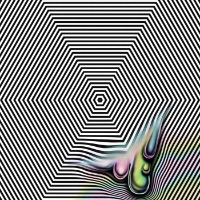- LP
- Recommended =
- New Release
Meara O'Reilly
Hockets for Two Voices
Cantaloupe Music - Cat No: CA21149
- updated:2024-12-11
US気鋭作曲家・サウンドアーティスト、Meara O'Reilly(ミーラ・オライリー)の2019年の記念すべきレコードデビュー作(録音は2017-2018年)にして、ネオクラシカル/実験音楽/アンビエントを繋ぐ素晴らしい逸品「Hockets for Two Voices(二声のためのホケット)」のアナログLPストックを入手できました。
In just over ten minutes of recorded music, Los Angeles-based composer, artist, and instrument designer Meara O’Reilly can communicate a daunting breadth of creative possibility. That’s no mean feat in today’s soundbite-obsessive world, but it’s part of what makes Hockets for Two Voices such an unusual and compelling addition to the hypermodern canon of new music.
Hocketing refers to the practice of splitting a melody across multiple parts, often in very surprising ways. While the form dates back to the vocal music of medieval Europe, it’s also found in indigenous folk practices from all over the world.
For O’Reilly, who grew up in a household filled with classical music, but who was drawn to the study of musical cognition and perception, her pursuit of hocketing is a natural extension of her interests.
“I feel a little like an outsider in some ways,” she admits, “in the sense that I didn’t come from a conservatory background. I was very much steeped in experimentalism and noise music in college. More recently I’ve found myself crossing over in the other direction, where I’m learning to write for orchestral instruments. I really love the focus and discipline and attention to listening that’s present in classical music, where you have the careful rehearsal of these perfect, beautiful little elements. I'm interested in merging both of these perspectives in my work.”
Hockets for Two Voices consists of seven movements, each less than two minutes long, but it took a year to record, requiring a vocal precision that pushed O’Reilly to physical limits she hadn’t yet explored, much less conceived of. At times, each voice alone can be an off-kilter sequence of leaps in pitch and rhythm; clarity only comes when that voice joins its counterpart. The result, referred to in music cognition as pseudo-polyphony, is the perception that there are more voices at play than in reality. In writing these pieces, O’Reilly drew inspiration from psychoacoustic researcher Albert Bregman, who demonstrated how the limits of our perceptual processes can actively shape our experience of music.
**********
All tracks performed and recorded by Meara O’Reilly in Los Angeles CA, April 2017-June 2018.
Engineering by Sonny Diperri, April 21-26 2017
Mixed by Marta Salogni in London UK, March 2019.
Mastered by Emily Lazar at the Lodge NYC, assisted by Chris Allgood, April 2019.
Early versions of hockets II., V., and VI. were commissioned by Tauba Auerbach for a performance at The Kitchen in NYC on April 29th, 2016.
For Isaiah Saxon.
Special thanks: Tauba Auerbach, Kate Conklin, David Longstreth, Kaitlyn Aurelia Smith, Thom Monahan, Christina Isobel, Arwen Griffith, Timothy O’Reilly, Gina Blaber, Bob Poole, Marina Mcdougall Vella, Rosemary Feitis, Marg Starbuck, and Bill Boykin.
Executive Producers:
Michael Gordon, David Lang, Kenny Savelson and Julia Wolfe
Label Manager: Bill Murphy
Sales & Licensing: Adam Cuthbert
Label Assistant: Cassie Wieland
Art Direction and Design: Tauba Auerbach, Meara O’Reilly, Isaiah Saxon
Cover Image: an edited photograph of a sculpture by Tauba Auerbach,
titled: Where there had once been a snag in the fabric.
Photography: Field Studio. © MOCA Cleveland 2018
Hocketing refers to the practice of splitting a melody across multiple parts, often in very surprising ways. While the form dates back to the vocal music of medieval Europe, it’s also found in indigenous folk practices from all over the world.
For O’Reilly, who grew up in a household filled with classical music, but who was drawn to the study of musical cognition and perception, her pursuit of hocketing is a natural extension of her interests.
“I feel a little like an outsider in some ways,” she admits, “in the sense that I didn’t come from a conservatory background. I was very much steeped in experimentalism and noise music in college. More recently I’ve found myself crossing over in the other direction, where I’m learning to write for orchestral instruments. I really love the focus and discipline and attention to listening that’s present in classical music, where you have the careful rehearsal of these perfect, beautiful little elements. I'm interested in merging both of these perspectives in my work.”
Hockets for Two Voices consists of seven movements, each less than two minutes long, but it took a year to record, requiring a vocal precision that pushed O’Reilly to physical limits she hadn’t yet explored, much less conceived of. At times, each voice alone can be an off-kilter sequence of leaps in pitch and rhythm; clarity only comes when that voice joins its counterpart. The result, referred to in music cognition as pseudo-polyphony, is the perception that there are more voices at play than in reality. In writing these pieces, O’Reilly drew inspiration from psychoacoustic researcher Albert Bregman, who demonstrated how the limits of our perceptual processes can actively shape our experience of music.
**********
All tracks performed and recorded by Meara O’Reilly in Los Angeles CA, April 2017-June 2018.
Engineering by Sonny Diperri, April 21-26 2017
Mixed by Marta Salogni in London UK, March 2019.
Mastered by Emily Lazar at the Lodge NYC, assisted by Chris Allgood, April 2019.
Early versions of hockets II., V., and VI. were commissioned by Tauba Auerbach for a performance at The Kitchen in NYC on April 29th, 2016.
For Isaiah Saxon.
Special thanks: Tauba Auerbach, Kate Conklin, David Longstreth, Kaitlyn Aurelia Smith, Thom Monahan, Christina Isobel, Arwen Griffith, Timothy O’Reilly, Gina Blaber, Bob Poole, Marina Mcdougall Vella, Rosemary Feitis, Marg Starbuck, and Bill Boykin.
Executive Producers:
Michael Gordon, David Lang, Kenny Savelson and Julia Wolfe
Label Manager: Bill Murphy
Sales & Licensing: Adam Cuthbert
Label Assistant: Cassie Wieland
Art Direction and Design: Tauba Auerbach, Meara O’Reilly, Isaiah Saxon
Cover Image: an edited photograph of a sculpture by Tauba Auerbach,
titled: Where there had once been a snag in the fabric.
Photography: Field Studio. © MOCA Cleveland 2018




音響心理学研究者のアルバート・ブレグマンからインスピレーションを得て制作された、電子加工された自らの肉声を使った、ミニマルな掛け合いから複雑な組み合わせまで、疑似ポリフォニー効果も含めて実験、中世ヨーロッパの声楽音楽や、世界各地の土着的な民俗音楽にも見られるような、二つの声が絶えず追いかけっこをするような状態が続くように緻密綿密にポケット設計された、7つの楽章から成るハイパーミュージック・ニューミュージック・カノンの異色作にして傑作。
各楽章の長さは2分足らずだが、肉体的限界に挑むような正確な発声が必要となり、レコーディングに1年を要したという入魂逸品。 (コンピューマ)